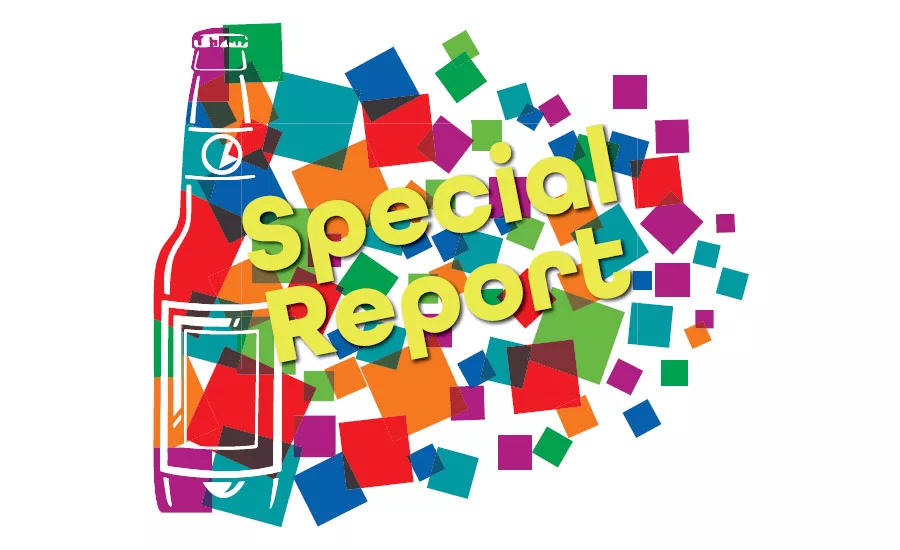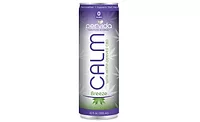Cannabis-infused beverages a potential disruption
Beverage-makers adapt to cannabis craze

In the song “Smoke A Little Smoke,” country artist Eric Church sings about how he wants to relax with the lyrics, “Act like tomorrow’s 10 years away, and just kick back and let the feelin’ flow. Drink a little drink, smoke a little smoke.” As the beverage market evolves, consumers now are able to combine drinking a little drink and smoking a little smoke into one (fluid) action with new developments in cannabis-infused beverages. Experts note that formulating beverages with tetrahydrocannabinol (THC) and cannabidiol (CBD) components potentially could disrupt the market.
“Cannabis is poised to disrupt virtually every consumer industry,” Chicago-based Euromonitor states in its whitepaper titled “Here Comes Cannabis: How Legalization Will Disrupt Global Industries. “While the total global market for cannabis, both legal and illegal, stands at $150 billion today, Euromonitor expects the legal market to grow to 77 percent of total sales to $166 billion in 2025.”
New York-based Beverage Marketing Corporation echoes similar sentiments on the growing popularity of cannabis consumer packaged goods (CPGs), and beverages in particular. “Research indicates that many alcohol consumers are switching to or plan to switch to cannabis as it becomes legal,” the market research firm states in its 2018 report titled “Cannabis Is The New Alcohol: Reinventing Cannabis For Sustainable Mainstream Use”.
“New food and beverage product entries into this space are key contributors to the growth of this next phase of cannabis culture because the bulk of new use is by mainstream consumers who want a casual high similar to the alcohol drinking experience, and this user wants to replicate the social experience of drinking alcohol: it’s a demographic that prefers to drink or eat rather than smoke, and is most amenable to ingesting the substance over the course of an evening, slowly, in liquid or low-dose edible form,” the report states.
“The beverage industry is best positioned to help the new cannabis consumer replicate the social intake experience they are accustomed to with alcohol, but with fewer side effects,” it says.
Some dope drinks
As a result of this “next phase of cannabis culture,” beverage brands are formulating craft beverages that are infused with components of the green plant.
As one example, hemp-derived products increasingly have become popular. In February, Rochester, N.Y.-based FIFCO USA’s Hemptails brand launched Hemp’D, a flavored malt beverage made with organic, sterilized hemp seeds. Hemp’D is low-sugar and contains no psychoactive ingredients, the company says. Packaged in a 23.5-ounce single-serve can, it features an 8 percent alcohol-by-volume content and gives off an herbal aroma, the company says.
Another recent hemp-derived launch was from Now-Brands LLC, Punta Gorda, Fla. Olde Imperial Hemp Flavored Vodka is distilled and filtered six times from non-GMO corn and is infused with hemp seed oil and organic natural vanilla. The 750-ml bottle features a 40 percent alcohol-by-volume content.
Craft beer brands also are formulating in the cannabis space. Last summer Lagunitas Brewing Co., a division of White Plains, N.Y.-based Heineken USA, launched Hi-Fi Hops. Although it contains no alcohol, Hi-Fi Hops is an IPA-inspired, hoppy, cannabis-infused sparkling water that is available in two forms: a 10 mg THC version and a 5 mg THC, 5 mg CBD version.
“We’ve often dreamed of hops and their cannabis cousin partying together at the family reunion,” said Head Lagunitas Brewmaster Jeremy Marshall in a statement. “We wanted to bring this party to life in a beverage. It’s high-time that good beer inspired a provocative, yet refreshing non-alcohol alternative. With a smidge of California sun-grown cannabis in every sip.”
Similarly, earlier this year San Diego-based High Style Brewing Co. released Coastal Haze, an alcohol removed, cannabis-infused craft beer. Inspired by pale ale styles of beer, Coastal Haze is brewed using Cascade and Amarillo hops, the company says. Packaged in a 12-ounce bottle, Coastal Haze is available in two forms: a 10 mg THC version and a 5 mg THC, 5 mg CBD version.
“Selection of our THC extract was very important,” said Lyden Henderson, chief operating officer of High Style, in a statement. “A one- to two-hour delay from consumption to onset of effects was unacceptable to us. We believe that our consumers deserve a ‘self-regulating’ product, where they know by the time they finish their first High Style whether or not their individual tolerance will allow them to responsibly have another.”
Interestingly, THC and CBD also are being made into distillates. Longmont Colo.-based Stillwater Ingredients, the business-to-consumer arm of Stillwater Brands, creates, processes and distributes THC and CBD distillates that are water-soluble, dubbed Ripple. Ripple can be added to any food or beverage product of the consumer’s choosing. The distillate is fashioned in three ways: Ripple Balanced 5, which contains 5 mg of THC and 5 mg of CBD; Ripple Pure 10, which contains 10 mg of purified THC; and Ripple Relief 20:1, which contains 10 mg of cold water-soluble CBD and 0.5 mg of cold-water-soluble THC.
As for the future of cannabis, it likely will disrupt not only the beverage alcohol market, but the CPG industry as a whole as society becomes more educated on the effects of cannabis-consumption and the move toward legalization continues, experts note.
“Reshaping millennia-old drinking rituals and providing an alternative to social lubrication occasions, cannabis should be either embraced as a symbiotic opportunity or faced as a potentially detrimental antagonist for an alcohol industry already on the defensive,” said Spiros Malandrakis, industry manager of alcoholic drinks, in Euromonitor’s whitepaper. BI
Looking for a reprint of this article?
From high-res PDFs to custom plaques, order your copy today!





